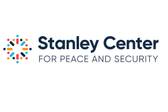Auditing Nuclear Risk Reduction
This project examines the past performance of nuclear risk reduction measures to inform policy choices on potential new measures.
Over recent years, the dramatic deterioration of security relationships between potential nuclear adversaries has led to a proliferation of recommendations on nuclear risk reduction. Risk reduction is now a prominent area of work in multilateral fora and bilateral discussions. Expert communities have responded, developing thorough frameworks for analysis on the subject and raising awareness of the value of risk reduction measures in practice.
This project, a collaboration between RUSI and the US-based Stanley Center for Peace and Security, aims to assess the efficacy of past nuclear risk reduction measures against key indicators of risk. Through an exploratory expert workshop and commissioned research papers, the project seeks to develop methods to evaluate how well such measures have worked, in order to inform recommendations for new agreements to address contemporary nuclear risks.
Project partner
Stanley Center for Peace and Security
Alongside our global partners, the Stanley Center drives policy in three issue areas: mitigating climate change, avoiding the use of nuclear weapons, and preventing mass violence and atrocities.
Find out more
Project outputs

This paper, by Rabia Akhtar and Ruhee Neog (July 2024), is an evaluation of the Agreement on the Prohibition of Attack against Nuclear Installations and Facilities between the Republic of India and the Islamic Republic of Pakistan, informally called the Non-Attack Agreement. The authors consider bilateral drivers of confidence building, specifically as they relate to the Non-Attack Agreement, and its potentially symbiotic relationship with the prevailing international legal and geopolitical environment. In its final section, the paper assesses how this confidence-building measure has held up in the 33 years since it entered into force.

This working paper, by Rose Gottemoeller and Daniil Zhukov (October 2023) explores the history of the Nuclear Risk Reduction Centers in the United States and the USSR (now Russia)—to explain the risks they were designed to address; to consider how well they have performed to mitigate those risks; and to identify benefits or hazards that were not anticipated when the NRRCs were conceived. Finally, it lays out some ideas for developing the NRRC concept going forward, to enhance risk reduction on a wider global basis.

In partnership with the Stanley Center for Peace and Security, this workshop focused on two categories of risk reduction measures: (1) nuclear risk reduction centers and (2) non-attack agreements. It brought together a select group of practitioners, academics, and experts to explore how to best evaluate the efficacy of those measures for reducing specific nuclear risks.





